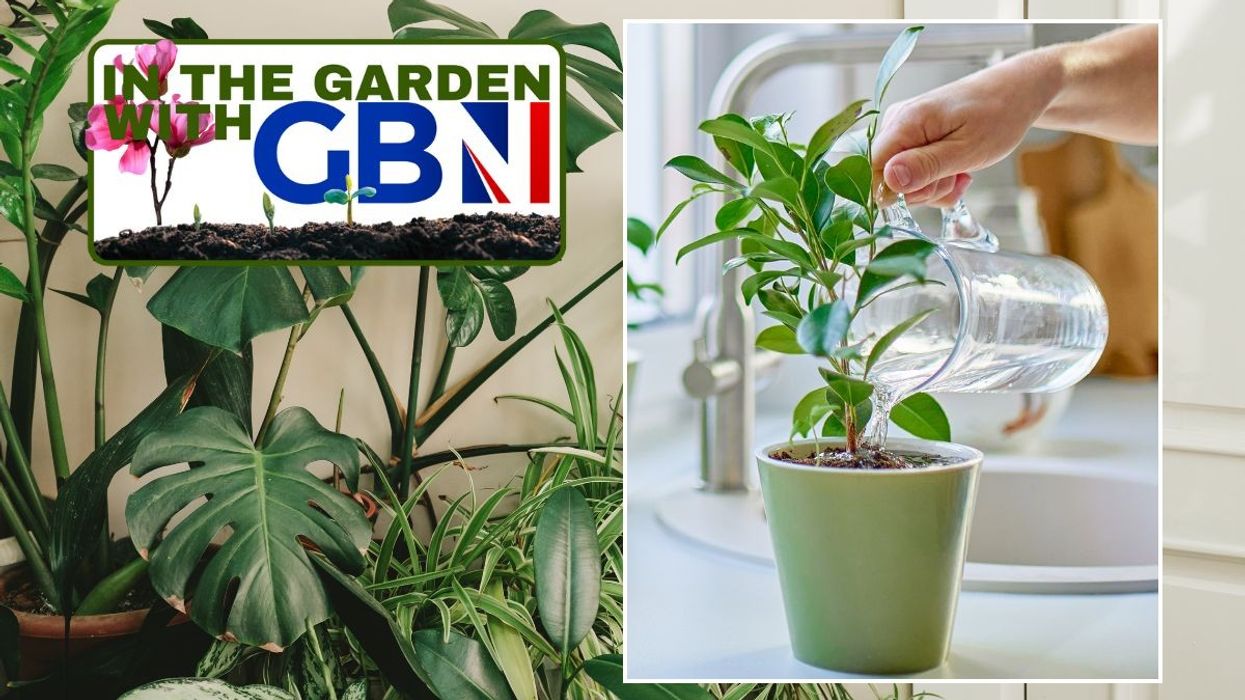Houseplants: Five crucial hacks to ensure indoor greenery thrives during the summer

Houseplants need several specific conditions to grow
|GETTY

GB News is sharing everything you need to know about houseplants to ensure they thrive over the summer. This week, we are looking at how to create an oasis in your home for optimal growth
Don't Miss
Most Read
Plant parents pour a lot of attention into gardens in spring, but houseplants need just as much love to thrive throughout the summer.
Fortunately, houseplant care is relatively straightforward because the greenery isn't subjected to outdoor elements.
In essence, plants need a combination of light and water for optimal growth - but an extra boost from fertilisers, combined with pruning methods, may promote further development.
With conditions continually shifting throughout the year, it can be hard to gauge whether your plant's needs are being met.
Fortunately, gardening experts have volunteered their professional tips for keeping plants in good nick throughout the year.
Where to put houseplants
Hallie Gray, home and garden expert at Home Detail explained where to put plants in the home to ensure they do well.
Houseplants need energy from the sun, but indirect light, like the kind found in an east-facing window, is optimal for their growth.
DIY expert Glen Peskett explained: "The best spot for houseplants is typically a bright, but indirect light location, usually close to east or west-facing windows, giving ample light without being scorched by direct sunlight."
Watering the plants
The average houseplant needs at least a tablespoon of water daily, but requirements differ slightly across species.
Because many houseplants come from subtropical regions, such as the beloved Swiss Cheese Plant, they need more water from those that grow in drier areas, like cacti and succulents.
The rule of thumb is to ensure potting soil is kept moist at all times but not wet.
Household scraps, such as banana skin and ground coffee, can also be mixed with water to give plants an extra nutritional kick.
 Waterlogging is a major cause of houseplant deaths | GETTY
Waterlogging is a major cause of houseplant deaths | GETTYAnother suggestion from experts is to keep plants hydrated and healthy by feeding them cooking water.
"The vitamins in vegetable water will keep them nourished and even starch from pasta and potato water will provide them with the nutrients they need, provided it's unsalted," explained the experts from Denby.
To avoid the development of root rot, however, plant parents should ensure the top inch of the soil in the pot is dry before watering.
Cleaning plants
Just like objects around the house need dusting to prevent debris from building up, plants can also get clogged up by dust particles.
Gently wiping down the leaves will ensure light and water can access the root system.
"Wipe the leaves with a damp cloth to help the plant breathe and grow better,” explained Gray.
Rotating plants
As the lifeblood of plants, lighting promotes photosynthesis and is converted into energy for new growth.
Plant parents should be careful not to leave one side of their plants deprived of this energy source by forgetting to rotate their plant pot.
Failing to rotate your pots could result in one side of the plant growing abnormally fast and jeopardising the overall structure of the plant.
“Turn your plants every week to ensure they grow evenly and don't lean towards the light,” explained Gray.
Repotting plants
One of the aims behind repotting plants is to prevent them from becoming root-bound, where the roots become too tightly packed.
The practice can help tidy up and shape the plant while encouraging new growth. It can also lessen the chance of disease development.
In essence, repotting minimises the risk of waterlogging soil, which is one of the most common causes of plant death.
“Repot your plants every 1-2 years to give them fresh soil and more room for roots,” advised Gray.
LATEST DEVELOPMENTS

Giving plants enough light is essential for healthy growth
| GETTYBenefits of houseplants
Bringing plants indoors can offer several benefits, with some claiming the greenery can purify the air.
While these claims have not yet been backed by scientific evidence, house plant expert Craig Morley, who partnered with Barratt London, claims houseplants have a cooling effect.
“If a plant is not watered often, this can reduce the rate of transpiration as the plant tries to conserve water.
“Giving your houseplants ample water will encourage transpiration and help to cool your home during hot weather," the green-thumbed expert shared.
“Placing your plant wet pebble tray can also promote transpiration,” the expert added.
“As the water evaporates from the tray, it creates a bubble of humidity surrounding the plant. Investing in a humidifier also has the same effect.”
Because houseplants aren't built for life indoors, they'll need a little extra care to stand the test of time.
Don't panic at the first signs of struggle, however, as even plants on the brink of death can be brought back to life.










